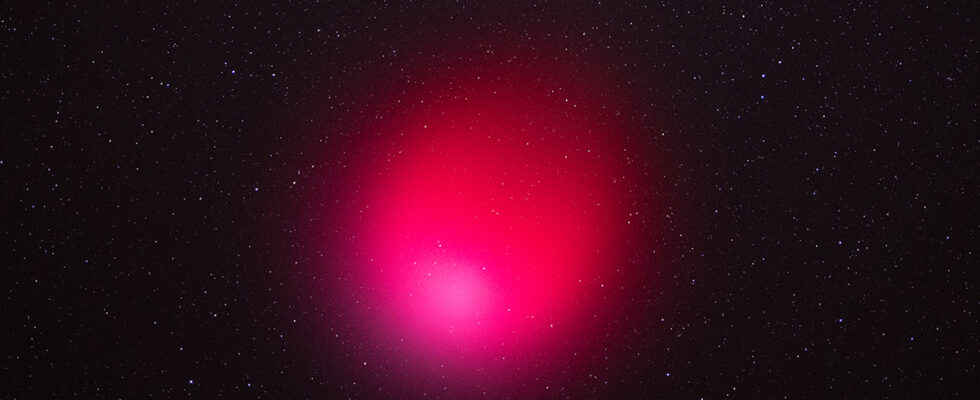The multiplication of rocket launches leads to the increase of a phenomenon visible to the naked eye. Balls of persistent red lights that are actually holes in the ionosphere.

After a series that kept space conquest enthusiasts in suspense for months, SpaceX’s Starship rocket finally took off on November 18. This was its second test flight, and it was ultimately a mixed success for the space agency.Elon Musk. It is not so much the launch itself that has caught the attention of some astronomers, but its effects on our atmosphere. A well-known phenomenon is indeed starting to gain momentum with the multiplication of SpaceX launches. It must be said that the agency even takes care of European satellites.
Called “aurora SpaceX”, it is the formation of a large ball of red light in the sky. In the case of American society, it is caused by the combustion of the rocket’s second stage as it falls back toward Earth. The resulting “task” is visible to the naked eye and persists for a few seconds. In reality, it is a hole in the ionosphere, a layer of the Earth’s atmosphere located between 60 and 1000 km from the ground. Stephen Hummel, an astronomer at the McDonald Observatory in Texas, explains that he sees 2 to 5 per month.
Astronomers worry about balls of light created by SpaceX rockets
These holes reach impressive sizes. The one left by an element of the launcher Falcon 9 of SpaceX in 2018 was 900 km in diameter. It is believed to have caused location errors in some GPS systems. Not by much, about a meter. However, these types of problems would become more and more frequent and more and more serious. In addition to disrupt radio wave transmissionsthe “SpaceX aurora” could have effects that are still unknown.
Read also – SpaceX: Starship will land on Mars within 3 to 4 years according to Elon Musk
“Their impact on astronomy is still being evaluated. Starlink satellites are a known problem, but the effects of rocket launches themselves are receiving increasing attention,” says Stephen Hummel. Less alarmist, other scientists instead see it as an opportunity to study how growing space traffic impacts the ionosphere.
Source: spaceweather.com
